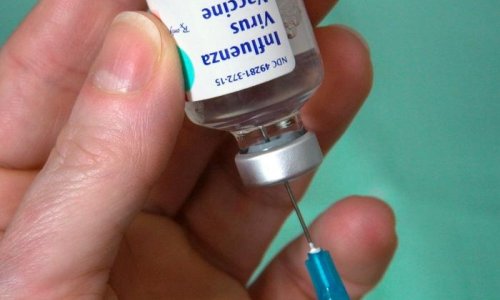Treatment options for atrial fibrillation to prevent a stroke
Karoline Laarmann reports
Neurocardiology – especially atrial fibrillation (AF) – was the key topic during a press conference held during the 55th Annual Congress of the Germany Society for Clinical Neurophysiology and Functional Imaging (DGKN) this March. For good reason: Worldwide, there are around six million AF sufferers -- and it is one of the most common causes of stroke because this cardiac irregularity can result in development of blood clots that move from heart to brain, obstructing blood vessels there.


Professor Bernd Ringelstein, Director of the Clinic and Polyclinic for Neurology at Munster University Hospital and the Congress President, described the significance of AF, the prevention of strokes and newly available treatment options.
‘Atrial fibrillation not only causes a quarter of all strokes, but also leads to a particularly severe form of cerebral infarction,’ explained Prof. Bernd Ringelstein. ‘On the one hand this makes it very dangerous but, on the other, early diagnosis and treatment of atrial fibrillation also makes it particularly preventable.’
70% of all strokes can be averted through drug treatment. Anticoagulants ensure that blood clotting is prevented and thus no thrombus can develop in the heart. Unfortunately, this treatment is a double-edged sword – anticoagulants, such as Marcumar, can also lead to a higher risk of bleeding. ‘On average, a patient with atrial fibrillation has a risk of about 5% a year of suffering a stroke, compared to a just under1% risk of bleeding caused by anticoagulants. Thus many patients, and doctors, have reservations about treatment with Marcumar,’ he pointed out.
However, most recently there has been considerable progress in developing anticoagulants. Three new drugs, which directly affect the clotting system and have fewer side effects, are close to licensing: Dabigatran, Rivaroxaban and Apixaban. Dabigatran has already been licensed in the US and Canada to treat atrial fibrillation and many European countries are expected to follow this year.
Intermittent AF is particularly dangerous
A further problem involved in the risk of stroke through cardiac arrhythmia is intermittent (paroxysmal) AF. Whilst chronic AF can be detected easily by taking a patient’s pulse, intermittently occurring forms of AF are more likely to remain undetected because they may occur when a patient sleeps and therefore remain unnoticed. According to estimates, around 50% of all strokes for which the causes remain unclear are likely to have occurred due to intermittent AF, Prof. Ringelstein said. The new anticoagulant substances also could be used for preventive treatment in those cases.
Several hospitals, including the University Hospital of Munster, are currently cooperating with Medtronic in carrying out a TRACK-AF study into the detection of this silent type of AF. This involves a small intervention to implant a diagnosis chip under the patient’s skin, which then monitors cardiac function over a three-year period. The data is fed to a server for evaluation via the internet, using a detector held by the patient close to the implanted chip for three minutes daily. The chip costs €2,000. ‘The device helps us to better understand silent atrial fibrillation and to determine the precise number of affected patients to ensure they receive suitable preventive treatment as early as possible,’ Prof. Ringelstein explained.
Currently, the only promising alternative to the diagnosis chip is a seven-day ECG to detect this insidious problem. ‘But here the success rate is only around 20%,’ he added. ‘The chip may also indirectly provide confirmation as to whether, for instance, a seven-day ECG should be extended to a 14-day ECG examination.’
Dysphagia after stroke
Along with atrial fibrillation, the event also focused on dysphagia, one of the most common effects of stroke. Up to 50% of all stroke patients have problems swallowing during the two-week acute phase. Apart from obvious symptoms, such as hemiparalysis or speech problems, these dysphagias are much harder to diagnose. ‘The clinical examination to detect dysphagia is very imprecise and around half of the affected patients remain undetected. Next to dehydration and malnutrition, this can lead to further, significant complications such as aspiration pneumonia,’ said Professor Rainer Dziewas, head of the neurological intensive care unit at the Clinic and Polyclinic for Neurology at Munster University Hospital. ‘That’s why, at this stage, we need additional diagnostic tools, which have only very recently become available.’
The use of video-endoscopic procedures makes precise diagnosis of the type of disturbance present and its severity. Dysphagia scores allow a systematic categorisation and standardised conclusions.
The fact that the examination can be carried out directly at the patient’s bedside brings a significant advantage.
Apart from adapting the consistency of nutrition or a complete avoidance of oral food intake by fitting a stomach catheter, there are now innovative treatments available for dysphagia. These are based on research findings showing that dysphagia develops centrally in the brain. Therefore, stimulation of certain brain areas leads to an improved ability to swallow.
Pharyngeal electrical stimulation, a procedure developed in England, by Professor Shaheen Hamdy and his research team (pub: 2011), involves sending light electric impulses to the throat via a catheter. The method has already shown promising results.
Another procedure, transcranial direct current stimulation, is currently on trial in a clinical study at Munster University Hospital by the working group ‘Neurogenic Dysphagia’, led by Prof. Dziewas. This involves stimulating the patient’s brain via two electrodes fitted to the patient’s head. The procedure has already proved itself as a treatment for paralysis caused by stroke.
26.04.2011










